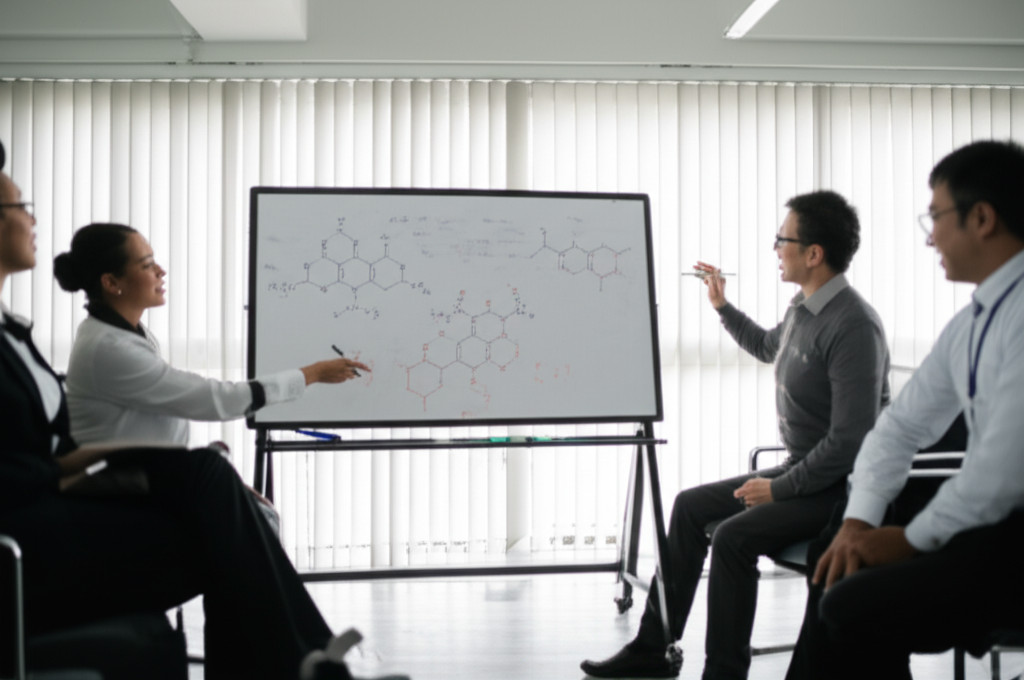Scientists have developed a breakthrough layered double hydroxide (LDH) synthesis method that solves chronic pollution problems in industrial chemical production. The patented technology replaces conventional urea processes with basic magnesium carbonate as core reactant, completely eliminating toxic ammonia byproducts while reducing freshwater consumption by over 90%.
LDHs, known chemically as hydrotalcite-like compounds, are vital across diverse industries. These layered minerals serve as catalyst carriers in petroleum refining, antacids in pharmaceuticals, flame retardants in ABS plastics, and powerful adsorbents for nuclear wastewater treatment. Over 24,000 tons are produced annually using traditional liquid-phase or solid-liquid methods – both plagued by severe environmental drawbacks. Liquid-phase synthesis generates vast acidic wastewater streams requiring costly purification, while urea-based solid-liquid reactions release hazardous ammonia gas demanding strict containment systems.
The innovative process initiates with basic magnesium carbonate mixed with specialized pumice catalysts saturated in ferrocene-trichloromethane solution. After adding measured water, aluminum hydroxide is introduced into sealed reactors heated to 180-220°C. Crucially, the reaction avoids nitrogen-containing precursors entirely. Following 2-5 hours of hydrothermal treatment, the slurry is cooled, filtered, and separated into reusable filtrate and solid LDH cake. The closed-loop system recycles >99% process water across multiple batches.
Eight industrial-scale trials confirmed remarkable efficiency. At optimal parameters (200°C, 2.5h, Mg:Al=4:1), the method achieved >99% conversion yield while producing zero ammonia emissions. Water reuse cycles demonstrated sustained efficacy – after 50 consecutive batches, synthesized LDH maintained critical specifications: whiteness >90%, aluminum-magnesium ratio (2.1-2.4), moisture content <0.5%, and stable pH (9.5-9.9).
This eliminates disposal costs for 8-10 tons of ammonia-contaminated waste per ton of LDH under prior methods. Chemical engineers emphasize the dual environmental impact: Firstly, the ammonia-free process removes explosion risks and atmospheric pollution. Secondly, water recycling slashes industrial consumption – facilities can now produce one ton of LDH using just 100 liters of make-up water versus 10,000 liters previously.
With global demand for LDHs growing 7.5% annually driven by nuclear wastewater remediation needs, this sustainable synthesis offers immediate operational benefits. Production plants can reduce wastewater treatment CAPEX by ~70% while meeting stricter discharge regulations. Companies utilizing these materials – from Tokyo Electric’s tritium removal systems to Pfizer’s antacid tablets – gain greener supply chains without compromising material performance.
As regulations tighten on industrial ammonia emissions under the Minamata Convention framework, this technology establishes a new production paradigm. The ferrocene-activated catalyst system remains active across ≥100 cycles, ensuring long-term viability. With pilot plants operational in China and Germany, industry adoption is projected to eliminate 340,000 tons of ammonia discharge by 2030 while preserving 1.2 billion cubic meters of freshwater reserves annually. Further scaling could revolutionize heavy metal adsorption in mining and electronic sectors currently reliant on pollution-intensive processes.

Manufacturing Facilities






Professional Export Experience
to Global Customers

1. 20 years of R&D, manufacturing and sales experience, serving customers in 60 countries and regions around the world;
2. Own R&D laboratory, pilot platform and large-scale production workshop, which can meet the audit requirements of global customers;
3. We can satisfy customers' perfect transition from small scale lab requirements (gram level) to commercialization requirements (hundred tons level).
A: We don't have Minimum Order Quantity, exact quantity should be provided before quotation for us to calculate the exact cost.
A: We don't provide free samples due to lots of request and expensive international courier's cost, we can deduct the sample charge after commercial order placed.
A: Our payment terms: Small or sample order: T/T IN ADVANCE. Commercial order: First order should be by T/T IN ADVANCE or L/C at sight, and following orders T/T 30~90days is acceptable subject to approval of credit application.